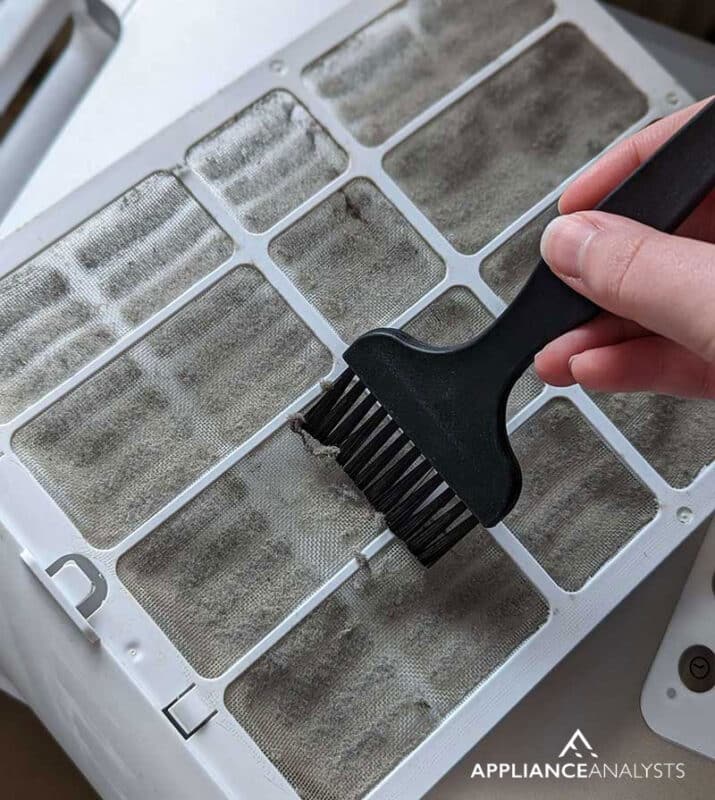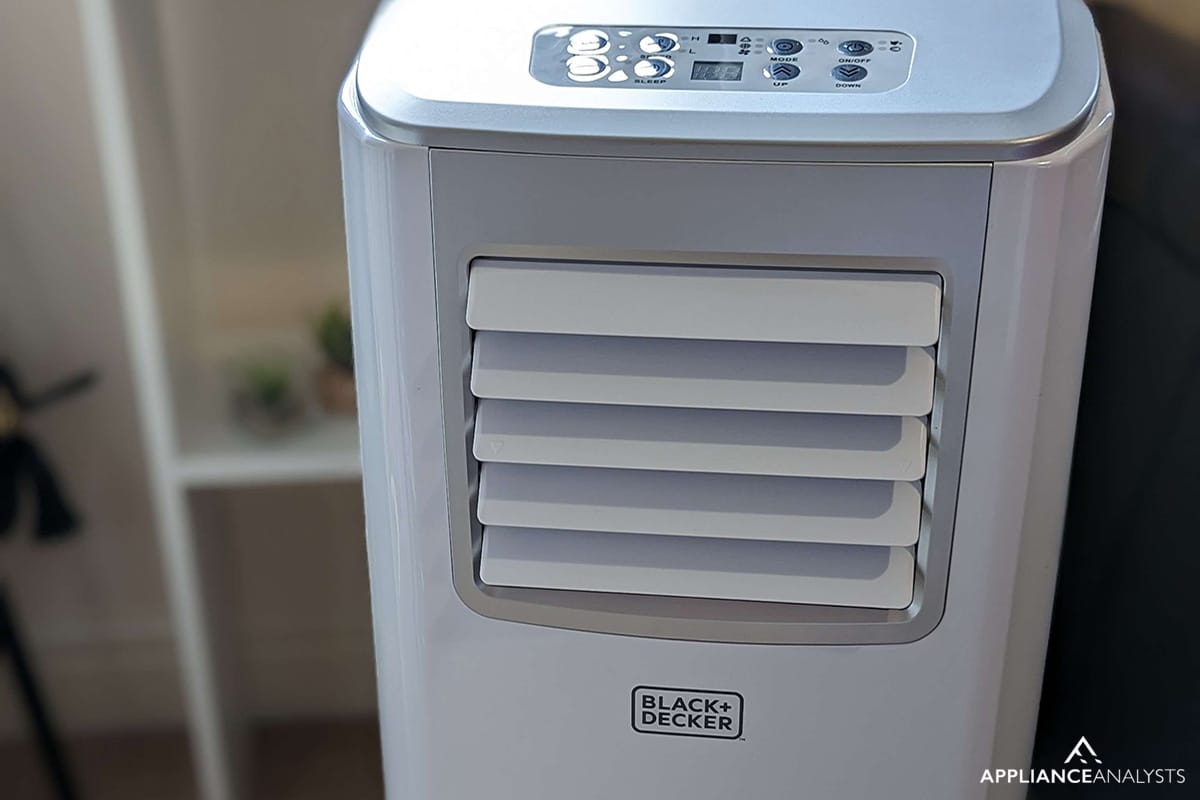We've independently reviewed this article to make sure it's as accurate as we can make it.
To find out more about our article creation and review process, check out our editorial guidelines.
It’s probably not fair to compare home appliances but in my opinion, your HVAC appliances probably rank in the most important category. And it doesn’t matter if they’re portable or not.
Not only is being too hot or too cold dangerous to our health in extremes, but it can also be terribly uncomfortable. Since being without heat in the winter or cool in the summer is something most of us would rather escape, it makes sense to properly maintain whatever type of equipment we have.
Since you’re here, you probably have a portable air conditioner. Maybe a new one that you want to keep in perfect condition, or you’ve been negligent with an older one that you need to get back on track.
Either way, we’ll walk you through everything you need to know. The overall best practices and some routine maintenance tips that will keep you cool on hot summer days.
And know that the team here at Appliance Analysts—with decades of HVAC and appliance experience combined—will provide you with information you can trust.
Gather Your Gear
There’s not much you need!
- A soft brush
- A duster
- An empty container
Portable Air Conditioner Health Check – The Essentials
If your portable air conditioner is installed and set up properly, it makes maintenance much easier and extends the life cycle of your unit.
Here are some best practices.
#1 Keep the Hose Short and Straight
Don’t be tempted to make use of whatever length of hose your air conditioner was provided with.
The closer your exhaust hose is to its point of exit, the better. It shouldn’t have any 90° angles and it should be as straight as possible.
If you have a unit with a dual hose system, and you’re using the window adapter in a vertical position, always put the exhaust hose to the top in the intake hose to the bottom. This will provide more efficient venting.
#2 Use the Right Window Adapter
Most portable air conditioners come with a window adapter that works in single or double hung windows. However, if you have any other type of window you will need a different type of adapter.
For example, if you have casement windows, be sure to use a flexible fabric adapter or if you’re venting out of a sliding patio door, you’ll need a tall vertical adapter.
Additionally, make sure to correctly match the adapter diameter to the diameter of your hose.
#3 Remove Heat Sources
Generally speaking, portable air conditioning units don’t provide the same amount of power as a window or mini split system. So don’t make it work harder.
Don’t expect your air conditioner to compete with direct sunlight. Keep your windows covered during the sunniest parts of the day.
#4 Location
Don’t position your portable air conditioning unit anywhere that’s typically dusty or dirty. If this is unavoidable, make sure to keep the fan motor and blades free from dust. Also, consider using an antimicrobial filter.
If you live in a humid area, try to locate your air conditioner in one of the least humid areas in your home. The higher the relative humidity surrounding the unit the more condensation will be created. This will lead to more frequent maintenance as the condensate will need to be drained more often.
Portable Air Conditioner Health Check — Follow Good Habits
If you want to get the most out of your portable air conditioner, consider following these habits.
#1 Set the Right Temperature
While you may be tempted to set your air conditioner’s thermostat as low as possible, the recommendation from the US Department of Energy is to keep it set at 78°F (25°C). They also recommend using supplementary cooling, such as fans, if necessary.
Bottom line? Everyone is different. If you can live with the cost, set your temperature at something that’s right for you.
#2 Leave It Running – Maybe
This isn’t a hard and fast rule. This is more about your personal preference. If you’re all about your budget and saving money, then turn your portable air conditioner off or adjust the temperature settings when you’re away from home.
If you’re more interested in being cool and comfortable, leave it running all day.
Here’s the rationale.
If you leave it running, heat isn’t building up in your home — in your furniture. If you wait to turn it on until you get home, or even if you have it programmed to turn on slightly before you arrive home, your portable unit will struggle to cool down the room and everything in the room.
That means it will take longer for you to cool down as well.
#3 Consider Electrical Loads
Depending on the size of your portable air conditioner, it can use up to 20 amps. To be precise, an 18,000 BTU air conditioner will draw between 19 and 20 amps.
This does not mean that it’s safe to run that air conditioner on a 20-amp circuit. In fact, you’re not supposed to exceed 80% of the amperage, so a 20-amp breaker should only take a maximum of 16 amps.
Before plugging in your air conditioner, make sure the outlet and circuit are rated for it.
Portable Air Conditioner Health Check — Maintenance
Now that you’re aware of all the best practices, let’s walk through what’s needed in terms of routine maintenance.
#1 Change or Clean Your Filters
The best way to shorten the life of your air conditioner is to neglect filter maintenance. It will also cost you more to run until it finally gives up.
The good news is, most portable air conditioners have washable filters, so you don’t have the additional cost of purchasing and installing a new filter three or four times a year.
But you still need to clean it. Here’s how.
1. Power off your air conditioner.
2. Remove the air filter.
3. Using a soft brush or vacuum, remove as much loose dirt as possible.

4. Combine warm water and any mild detergent, such as dish soap, and apply the mixture to the filter.
5. Try using a soft brush again if it’s a challenge to remove any caked-on dirt.
6. Rinse thoroughly.
7. Shake off excess water.
8. Allow to sit and air dry. When the filter is 100% dry, reinstall it into your air conditioner.
It’s very important that you do not put an even slightly damp filter back into your air conditioner as this creates a breeding ground for mold and mildew.
If your air conditioner does have a filter that requires replacement, refer to your owner’s manual for the correct size.
If you want to get any replacement part – or see how much one would cost – click to enter your model number in the search bar below. Our partners at AppliancePartsPros stock almost every part with free guides on how to install them.

#2 Inspect and Clean the Condenser and Evaporator Coils
These two coils work together to remove heat from your home. If you allow them to get too dirty, they’ll stop doing their job. They may even freeze over.
1. Turn off your air conditioner.
2. Remove the filter to access the coils.
3. Use a soft brush to clean the coils.
4. Replace the filter.
#3 Drain the Condensate
If your portable air conditioner requires manual draining, be sure to do it often. Especially if you’re in a humid environment. In some cases, they may need to be drained every day.
Most portable air conditioners will have an automatic shut-off that will kick in once the water reservoir is full, so this will prevent overflowing. Some will also beep when the reservoir is full.
1. Power off your unit.
2. Check your owner’s manual for specific instructions.
2. Find the drain port and place an empty container under it to catch the condensate.

#4 Clean the Vents
Your portable air conditioner has two discharge vents. One for cold air, which is usually on the front or top of your unit, and another for warm air that’s typically on the back.
1. It’s a good idea to dust these off whenever you’re doing your regular household dusting and cleaning.
2. If they are exceptionally dusty, inspect your filters.
You’ve Done It!
There really isn’t a lot of work involved when it comes to the care and maintenance of a portable air conditioner.
You probably won’t even spend a few hours a season on it, but you’ll be cool and comfortable knowing the following.
- Your portable air conditioner is working as it should—efficiently and optimally.
- You’re not wasting money because of a bad location or dirty filter.
- Your filter isn’t a breeding ground for mold and mildew.
So kick back, put your feet up, and stay cool!







